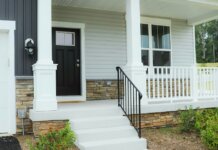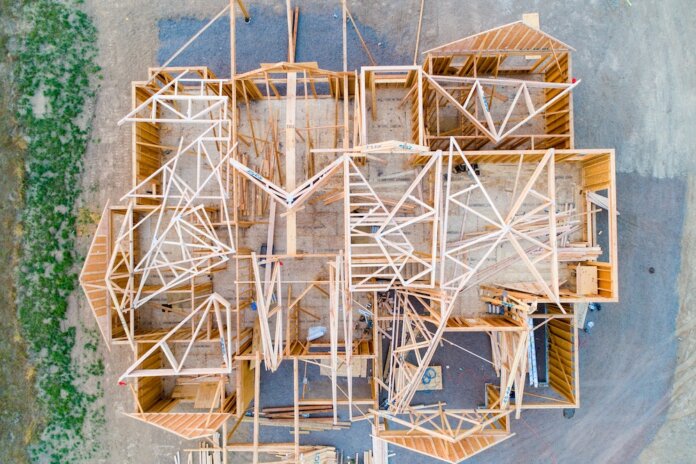Housing starts in April were at a seasonally adjusted annual rate of 1.724 million, a decrease of 0.2% compared with March but an increase of 14.6% compared with April 2021, according to estimates from the U.S. Census Bureau and the U.S. Department of Housing and Urban Development.
Starts of single‐family homes were at a rate of 1.1 million, a decrease of 7.3% compared with March.
Starts of multifamily homes (five units or more per building) were at an annual rate of 612,000, an increase of 16.8% compared with the previous month.
Regionally, and year over year, combined single-family and multifamily starts were up 6.3% in the Northeast, 5.2% in the Midwest, 13.3% in the South and 8.3% in the West.
Building permits also dropped in April. They fell 3.2% month over month to an annual rate of 1.819 million. Year over year, permits were down 4.6%.
Permits for single‐family homes were at a rate of 1.11 million, a decrease of 4.6% compared with March. Permits for multifamily dwellings were at a rate of 656,000, a decrease of 0.6% compared with March.
Regionally, and year over year, permits were down 4.9% in the Northeast, but were up 4.0% in the Midwest, 3.5% in the South and 1.3% in the West.
Housing completions were at a seasonally adjusted annual rate of 1.295 million – a decrease of 5.1% compared with March and down 8.6% compared with April 2021.
“Lower single-family construction starts in April reflects our recent builder surveys showing notably weaker confidence in the single-family market, as rising mortgage rates and building material construction costs are driving more potential buyers out of the market,” says Jerry Konter, chairman of the National Association of Home Builders (NAHB), in a statement.
“President Biden’s plan to address housing affordability challenges is a welcome development, but the administration needs to focus more on resolving rising lumber and building material prices and supply chain bottlenecks that are raising housing costs far faster than wages.”
“Today’s housing starts report is more evidence that the single-family market is slowing,” adds Robert Dietz, chief economist for NAHB. “While single-family starts are up 4.1 percent on a year-to-date basis, we’re expecting flat conditions for the year and a decline in 2023 as housing affordability challenges in the form of higher mortgage rates and construction costs continues to worsen housing affordability conditions. Single-family permits are down 2.3 percent on a year-to-date basis thus far in 2022.”
Odeta Kushi, deputy chief economist for First American, says “builders still have a backlog of uncompleted homes to get through before they can break ground on new projects. The number of single-family homes authorized, but not started was nearly 8.5 percent higher year over year in April.”
“Similarly in April, there were 815,000 single-family homes under construction (SA), which is the highest level since 2006,” Kushi says. “On a more positive note, this was a strong month for multi-family construction. Housing starts for buildings with five or more units increased nearly 17% on a monthly basis and 42% compared with one year ago.”
Builders continue to face supply chain constraints, delaying projects and impacting the cost of materials.
“Builders continue to face supply chain disruptions, rising input costs, and concerns that declining affordability is pricing out potential buyers, particularly first-time home buyers, which are the most rate sensitive,” Kushi says. “Housing demand is softening, but that means more balance is coming to the housing market. The housing market of 2020 and 2021 was the exception, not the norm.”
“The increase in rates alongside rising house prices may prompt first-time buyers to pull back from the market,” Kushi adds. “As this happens, house price growth will moderate and bring some much-needed balance to the red-hot housing market.”
Photo: Avel Chuklanov











